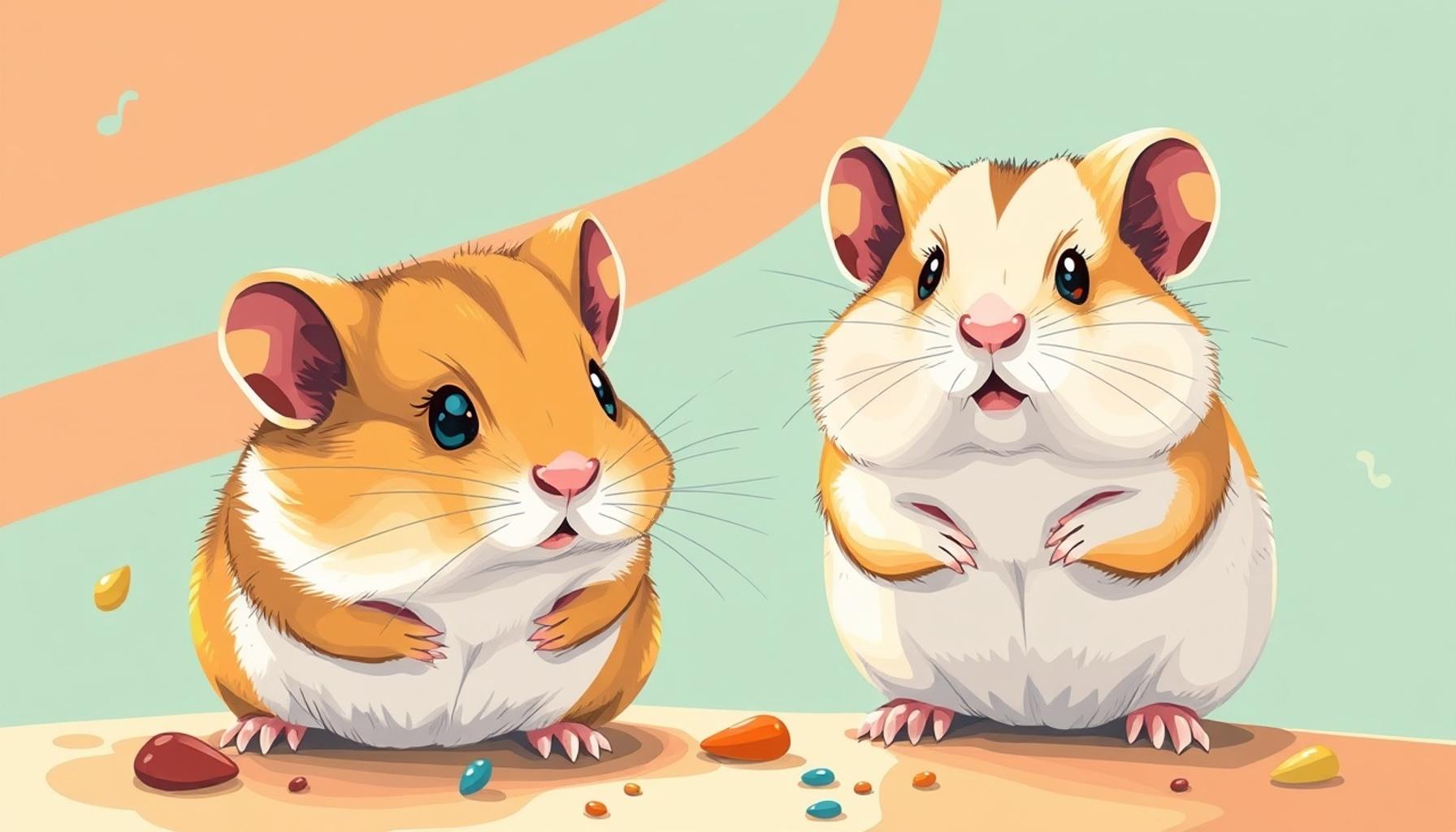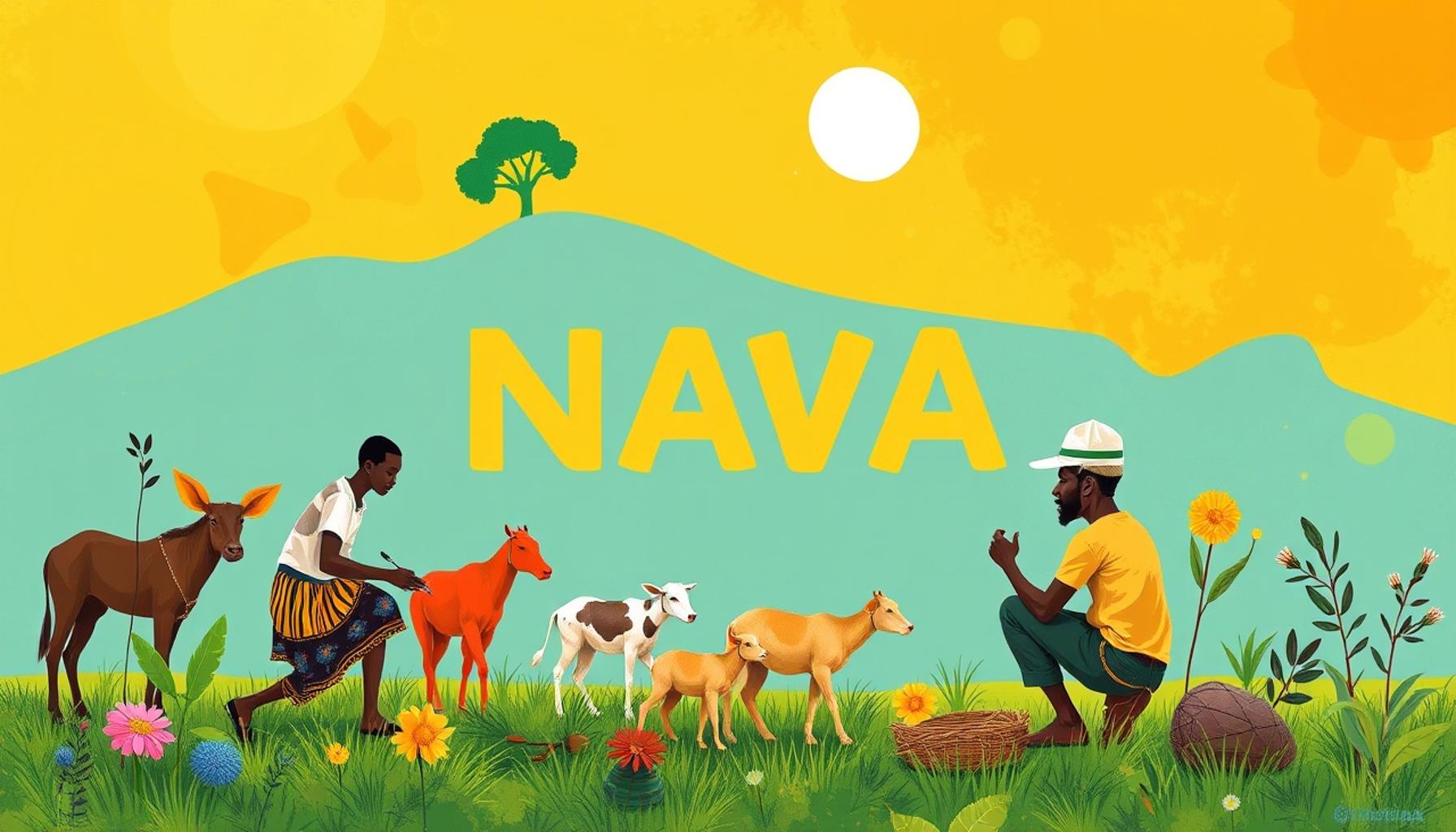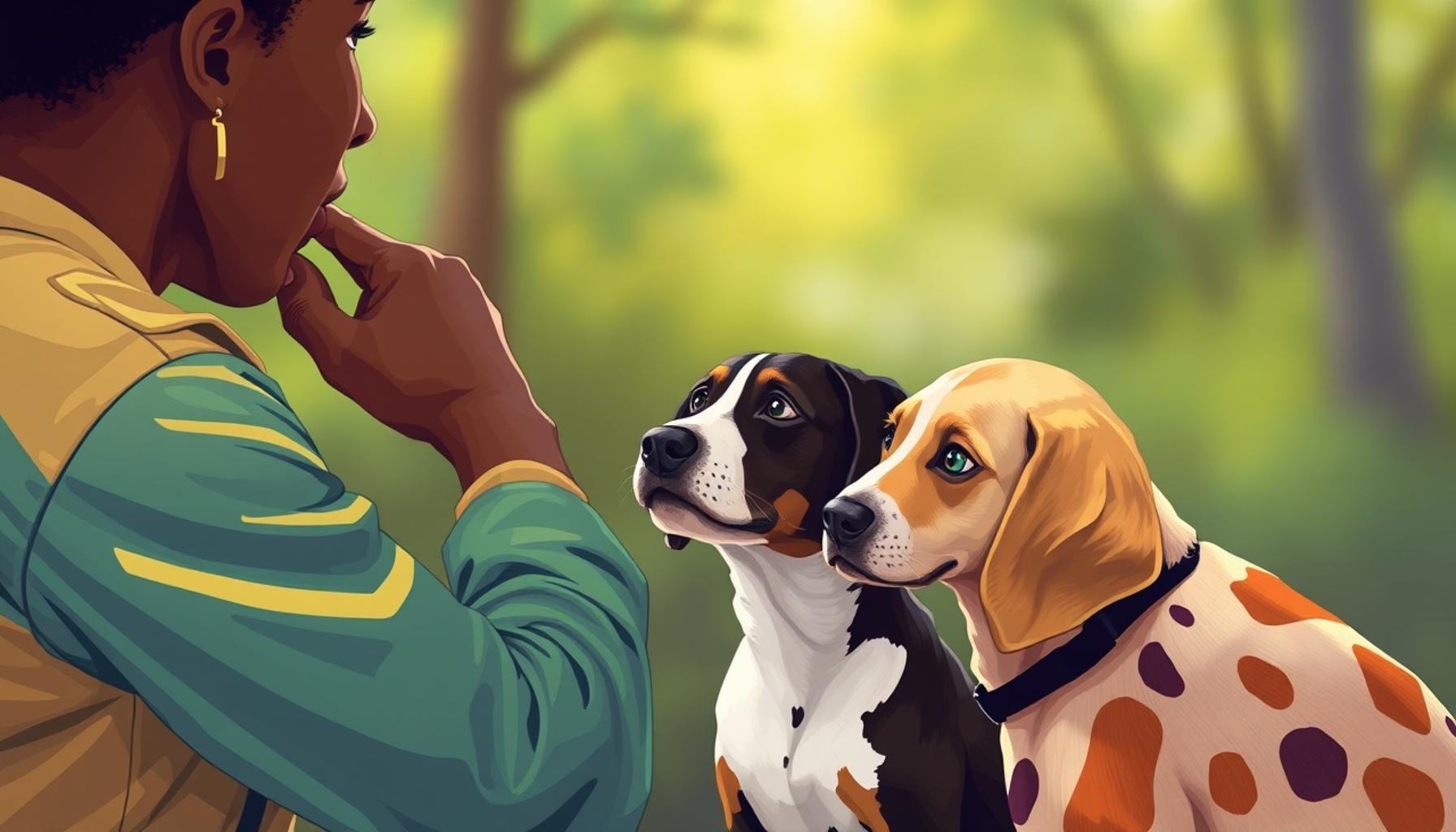Training Techniques for Small Pets: Rabbits, Hamsters, and Others

Understanding Small Pets
Training small pets can transform your relationship with them, creating bonds that are based on mutual respect and understanding. Pets like rabbits, hamsters, guinea pigs, and even ferrets possess unique personalities and behavioral traits that one must consider when embarking on the training journey. Knowing these characteristics helps you tailor your approach for successful outcomes.
Effective Training Techniques
To train small pets effectively, utilize several core techniques that foster trust and recognition of desired behaviors. Here are some detailed explanations of those approaches:
- Positive Reinforcement: This strategy encourages pets to repeat good behavior through rewards. For instance, when training a rabbit to use a litter box, every time it uses it correctly, reward it with a small piece of its favorite treat, like a carrot or a leafy green. This connection between action and reward reinforces the behavior, making the rabbit more likely to repeat it.
- Consistency: Establishing a routine can significantly influence your pet’s learning curve. Set specific times for feeding, playtime, and training exercises. For example, if you train a hamster to come to the sound of a bell, ring the bell consistently at the same time every day during their active hours. This tactic ensures the pet can easily link the sound with being rewarded, thereby enhancing responsiveness.
- Patience: Recognizing that training is a gradual process is crucial. Take time to observe your pet’s cues and behaviors. For instance, a rabbit may take longer to warm up to litter training than you initially expect. Being patient and allowing your pet to learn at its own pace fosters a stress-free environment conducive to learning.
Benefits of Training
Beyond behavioral improvements, training small pets significantly contributes to their mental well-being. Pets like rabbits, often perceived as low-maintenance, thrive on mental stimulation just as much as physical exercise. Engaging in simple training exercises can prevent boredom and reduce the likelihood of destructive behaviors. Activities such as obstacle courses made from everyday items can keep them entertained while promoting agility and coordination.
In Nigeria, where small pet ownership is on the rise, investing time in training presents an opportunity for communal bonding. Families with children can work together to teach their pets, which not only teaches responsibility but also strengthens family ties through shared experiences. Furthermore, as urban living situations become more common, well-trained pets can adapt better to life in apartments and smaller homes, fostering a happier coexistence.
Conclusion
Diving into the realm of small pet training unveils numerous advantages that enhance the experience for both you and your furry friends. By employing techniques like positive reinforcement, maintaining consistency, and exercising patience, you can create a more harmonious living environment tailored to their needs. Explore the fascinating world of small pet training further, and witness how it enriches the lives of these adorable companions.

ADDITIONAL INSIGHTS: Expand your understanding here
Unlocking Their Potential: A Guide to Training Small Pets
Understanding the distinct nature of small pets is fundamental to mastering effective training techniques. Each type of small pet brings its own set of behaviors and quirks to the table, and adapting your training techniques accordingly is essential for achieving lasting results. In Nigeria, where the popularity of small pets such as rabbits, hamsters, and guinea pigs is on the rise, harnessing the right training methods can create a more fulfilling life for both pets and owners.
Building a Trusting Relationship
Before diving into the specifics of training techniques, it is crucial to establish a foundation of trust between you and your pet. Small animals are naturally curious yet often cautious creatures. For instance, when introducing a new training method, whether with a rabbit or a hamster, spending time simply getting to know your pet can pave the way for effective communication. Start by allowing them to explore their environment with you present, reinforcing a sense of safety and comfort.
Key Training Techniques for Small Pets
An effective training regimen comprises a few vital techniques that can be integrated into daily interactions. Below are some key methods:
- Target Training: This method involves teaching your pet to touch a target object, such as your hand or a stick, with its nose or paw. Gradually, you can shape behaviors by rewarding your pet when it successfully reaches the target. For example, you might train a guinea pig to come to you or perform simple tricks, enhancing their engagement and mental acuity.
- Clicker Training: This highly effective technique employs a sound—a click from a training device—as a marker for behavior you wish to reinforce. When your pet successfully performs a desired action, such as hopping through a hoop, you immediately click and follow up with a reward. This method is effective for rabbits, allowing for clear communication about what behavior is being rewarded.
- Small Steps: Breaking down complex behaviors into smaller, more manageable steps can significantly facilitate the learning process. For instance, when teaching a hamster to navigate an obstacle course, you could start by rewarding them for simply exploring a single barrier before gradually expanding to more challenging tasks.
Environment Enrichment and its Role in Training
Incorporating environmental enrichment is another essential training technique that caters to the natural instincts of small pets. In Nigeria, where many pet owners may live in urban settings, creating an engaging environment can be crucial for maintaining a pet’s mental well-being. Use simple items like cardboard tubes, tunnels, and safe chew toys to stimulate your pet’s curiosity.
Moreover, engage your small pet in various interactive activities during training sessions to combat boredom and enhance learning outcomes. For example, setting up a mini scavenger hunt for treats can provide both physical and mental stimulation, satisfying their innate foraging instincts.
Training small pets is not a one-size-fits-all process; by understanding their uniqueness and employing effective techniques, you can foster a more harmonious and rewarding companionship.
| Training Techniques | Advantages |
|---|---|
| Positive Reinforcement | Encourages desired behavior with rewards, leading to a strong bond. |
| Clicker Training | Provides clear communication, making it easier for pets to understand commands. |
| Socialization Exercises | Helps small pets adapt to various environments and boosts confidence. |
| Routine Establishment | Creating a consistent schedule reduces anxiety and promotes learning efficiency. |
These techniques contribute significantly to effective training for small pets like rabbits and hamsters, making the process enjoyable for both the pet and the owner. The emphasis on positive reinforcement not only helps in training but fosters a nurturing environment, equipping your pets with essential social skills. Exploring various methods opens avenues for deeper connections with your furry companions.
RECOMMENDED: Check out this similar article
Enhancing the Training Experience for Small Pets
Once you’ve established a trusting relationship and grasped core training techniques, the next step is to focus on enhancing the training experience. This involves understanding the personality of your small pet and responding to their needs to keep them engaged and enthusiastic about learning. Let’s explore additional strategies that can elevate the training process for small pets such as rabbits, hamsters, and guinea pigs.
Positive Reinforcement: The Heart of Training
At the core of effective training for small pets is the principle of positive reinforcement. This approach revolves around rewarding good behavior rather than punishing undesired actions. For instance, when training a rabbit to use a litter box, rewarding them with a favorite treat right after they use it encourages repeated behavior. Utilizing fresh vegetables or fruits as rewards can be particularly effective, especially in regions like Nigeria where fresh produce is readily available.
It’s essential to keep the rewards small and healthy to avoid overweight concerns, especially in sedentary pets like hamsters. When they perform the desired behavior, the immediate praise and treats will reinforce their willingness to cooperate.
Establishing a Routine
Consistency is key when it comes to training small pets. Establishing a routine allows your pet to anticipate activities, thus making training sessions predictable and less stressful. For example, setting aside time each day for training can help condition a guinea pig to associate certain times with learning. A schedule helps cultivate a positive environment where your pet can thrive, leading to a more harmonious companionship.
Socialization and its Benefits
Socialization is another critical aspect of training small pets. Interacting positively with various environments, sounds, and other pets not only builds confidence but also cultivates adaptable behavior. For rabbits, gentle socialization during their formative weeks can help them grow into well-adjusted, friendly companions. In Nigeria, exposing pets to different stimuli, such as family gatherings or even outdoor experiences, can provide valuable training opportunities. Always supervise these interactions to ensure safety while allowing your pet to explore their world.
Creating a Short Training Timeline
Being mindful of the attention span of small pets can significantly enhance training efficacy. Training sessions should be brief yet frequent—usually around 5 to 10 minutes per session. Overloading your small pet with too much information at once can lead to frustration. Instead, aim for several short, engaging sessions throughout the day to maintain their enthusiasm. For instance, while teaching a hamster new tricks, keep the sessions fun and interactive, gradually building towards more complex behaviors.
Understanding Body Language
Lastly, becoming adept at reading your small pet’s body language can be invaluable during training sessions. Recognizing signs of stress, disinterest, or excitement enables you to adjust your approach promptly. A relaxed posture, twitching nose, or a quick hop often signifies curiosity or eagerness. Conversely, if your pet starts hiding or displaying aggression, it may be time to take a break or change tactics. In Nigeria’s vibrant households, fostering keen observation habits can enhance overall training success, offering deeper insights into your pet’s reactions.
By incorporating these enriching training techniques into your routine, you’re not only teaching your small pets new behaviors but also becoming an attentive and empathetic owner invested in their well-being and happiness.
CHECK OUT: Click here to explore more
Conclusion: Nurturing Bonds through Training
In conclusion, the journey of training small pets such as rabbits, hamsters, and guinea pigs is not just about imparting commands or tricks; it is a profound opportunity to build a stronger bond with these delightful companions. By utilizing effective training techniques grounded in positive reinforcement, establishing a regular routine, and promoting socialization, owners can create a nurturing environment that fosters both learning and trust.
Understanding your pet’s unique personality is essential, as it enables you to tailor your approach for maximum engagement. Recognizing non-verbal cues through body language is equally crucial, providing insights into your pet’s emotions and comfort levels. Take note, in the context of Nigeria, the vibrant stimuli of everyday life can serve as training opportunities, helping your small pet adapt and flourish in diverse environments.
Moreover, remember to keep training sessions brief yet frequent, adapting to your small pet’s attention span to maintain enthusiasm. Each interaction not only strengthens skills but also enriches the shared experience, fostering an environment of mutual respect and companionship.
As you delve deeper into these training techniques, you may uncover new pathways to enhance your relationship with your small pet. Embrace the adventure, and you will discover that the journey of training is as rewarding as the destination itself.


